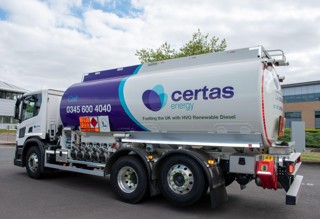In 20 years' time, Fleet Van confidently predicts that light commercial vehicles powered by hydrogen fuel cells will be a common sight on UK roads, producing smooth, quiet power and emitting nothing but water vapour.
This prediction is no wild stab in the dark. Mercedes-Benz already has a handful of fuel-cell Sprinters on test at its R&D headquarters in Stuttgart and some of the buses operating in Hamburg run on fuel cells.
Admittedly, we are nowhere near grasping this Holy Grail yet – a Mercedes-Benz spokesman said recently that if a fleet operator wanted to buy one of these eco-friendly models, it would cost in the region of £1 million.
But the technology is here and prices will eventually come down to levels where fleets will find it cost-effective.
In the meantime, what does the cost-conscious yet environmentally-aware van fleet operator choose?
While diesel power is still the choice of the vast majority of operators, there is an ever-increasing range of alternatives – and it would be wise to examine these options.
Robert Evans, chief executive officer at Cenex, the centre of excellence for low carbon and fuel cell technologies, told Fleet Van: “With the new and emerging generation of low-carbon vehicles, fleet decision-makers have an alternative to petrol and diesel vehicles that can suit a wide range of applications.
“However, given the range and recharging requirements of electric vehicles, duty cycle based wholelife cost modelling is essential for their successful economic and operational integration into day-to-day operations.
“Although the trend of using a range of vehicle technologies is increasing, it is recognised that different technologies will deliver different performances across a range of vehicle types and duty cycles.
"This is why the one-size-fits-all solution no longer applies and greater care needs to be taken in matching the right vehicle to an application.
"A significant number of fleet vehicles operate within well-defined parameters.
"By analysing the duty cycles of fleet vehicles and the activity of each vehicle over a period of time, it is possible to cluster vehicles together and define a selection of duty cycles for a typical fleet.
"Combining wholelife costs and a duty cycle approach therefore enables a fleet manager to determine whether a certain technology application meets the financial and operational performance required for the fleet.”
Standard wholelife cost modelling already indicates that there is a difference in the distribution of costs, with some difficult to quantify without a trial. However, a duty cycle based wholelife costing approach will take into account the large number of variables beyond simply the purchase price, including costs that will alter over time such as taxes, subsidies, fuel and electricity use.
Previous trials have proved the value of the real-world vehicle experience.


















Login to comment
Comments
No comments have been made yet.